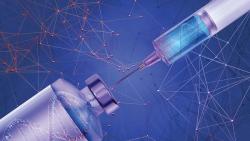
OR WAIT null SECS
- About Us
- Advertise
- Contact Us
- Editorial Info
- Editorial Contacts
- Editorial Advisory Board
- Do Not Sell My Personal Information
- Privacy Policy
- Terms and Conditions
© 2024 MJH Life Sciences™ and Pharmaceutical Technology. All rights reserved.
Emerging Therapies Drive Analytical Advancements
The emergence of mRNA vaccines and cell and gene therapies has pushed innovation in analytical methods.
The bio/pharmaceutical industry has seen the development of a variety of emerging therapies, such as messenger RNA (mRNA) vaccines and cell and gene therapies. These innovative modalities often require a need for new test methods, which has changed analytical testing requirements, says Jan Bekker, PhD, head of Global Commercial Operations at BioCina.
According to Milena Quaglia, PhD, senior associate principal scientist, RSSL, “the analytics required for these emerging therapies benefit from the knowledge and progress in the protein biopharmaceutical sector. Some of the chromatographic and biological methods have rapidly been adapted to the measurements of, for example, viral vectors. The increased opportunities, funding and industry needs have played a significant role in driving the enhanced robustness of analytical platforms, particularly those used in R&D (such as mass spectrometry) for routine analysis. The complexity of cell therapy and its production at a different scale render the analytical requirements and the location of the analytical physical sites challenging. Additionally, the development of potency cell bioassays for cell therapy has proven to be extremely complex due to the heterogenicity of the product.”
Cell and gene therapies, as well as mRNA, have developed alongside advancements in long-read technology to provide more holistic testing, says Andrea O’Hara, PhD, strategic technical specialist, Next-Generation Sequencing, GENEWIZ from Azenta Life Sciences. “A great example here is product characterization for AAV [adeno-associated virus] and mRNA therapeutics. While these two therapeutics are quite different, both require effective utilization of long-read technology to accurately characterize and confirm expected products,” says O’Hara. “For AAV, this option is necessary due to the intricacies of the product and its secondary structure around the inverted terminal repeats (ITRs), which are difficult to sequence with traditional approaches. For both AAV and mRNA therapeutics, the ability of long-read sequencing to effectively capture the full molecule is critical to ensure the purity and fidelity of these products.”
Trends in analysis
Currently, according to Bekker, technologies used in biopharma analysis include chromatography (e.g., high-performance liquid chromatography [HPLC] and ultra-high performance liquid chromatography [UHPLC]) with ultraviolet–visible spectroscopy (UV–Vis), fluorescence, MS, refractive index, evaporative light scattering, electrochemical, and charged aerosol detection. “BioCina uses different modes of chromatographic separation, such as [reversed phase]–HPLC, [ion chromatography]–HPLC and SE–HPLC [size-exclusion HPLC], coupled with UV–Vis, fluorescence, MS, or evaporative light scattering detection for purity analysis of in-process, release, and stability testing across the microbial, plasmid DNA, and mRNA product modalities,” says Bekker.
Other technologies include enzyme-linked immunosorbent assay (ELISA), capillary electrophoresis, gel electrophoresis, cell-based assays, microbiology test methods, coupled enzymatic assays, dynamic light scattering (DLS), among others, says Bekker. “[We use] DLS for the determination of particle sizes and analysis of particle size distribution for microbial products and lipid nanoparticles, including mRNA vaccines and other LNP-encapsulated products,” he states.
“Biopharmaceutical analytical workflows are currently well accepted in industry with an increasing confidence in mass spectrometry (particularly for host cell protein analysis and bi-specific antibodies) and bioassays including analytics supporting their development/validation,” says Quaglia.“While the development of bioassays for cell and gene therapy is still in its infancy, an increased appreciation of the data generated by mass spectrometry-based methods for AAV capsid characterisation, mRNA sequencing, purity determination is observed. The requirements for robust next generation sequencing are also increasing in the cell and gene therapy sector.”
Modern techniques are making analytical procedures more robust. According to Melissa El Khouri, head of Quality, BioCina, analytical development can be sped up and testing across multiple product modalities can be achieved by using modern analytical equipment and techniques compatible with high throughput testing. In addition, different types of analysis for multiple biologics modalities can be achieved by using sodium dodecyl sulfate capillary electrophoresis (CE–SDS), RNA, capillary isoelectric focusing (cIEF), and glycan analysis, according to El Khouri.
“While Sanger and short-read [next-generation] sequencing [NGS] have always been popular, long-read sequencing is on the rise,” says O’Hara. “Long-read sequencing has become more cost effective as the technology has advanced and offers insights that confirm or even surpass traditional Sanger and short-read NGS options.”
High-resolution analytical technologies, such as sensitive capillary electrophoresis sodium dodecyl sulfate (CE-SDS), are replacing older techniques, says El Khouri. “Modern capillary electrophoresis systems provide automated, quantitative, and highly repeatable sizing and purity analysis across multiple modalities. Operation is automated and sample preparation is kit-based, which minimizes processing time and reduces
processing errors,” she says.
Assay development for new modalities
The requirements for in-vivo testing have been reduced by the increased use of cell-based bioassays; however, to ensure reliable data, analytical controls and standards are fundamental, says Quaglia. She stresses that regulatory requirements are not well-defined, which can cause confusion about which analytical procedure should be used for new modalities. “mRNA sequencing requires robust analytical and sample preparation platforms together with standards and standardized analytical workflows/guidelines. Availability of materials of good quality and at reasonable costs are often the main drawback for method development/improvement and implementation,” she says.
The development of assays for new modalities requires consideration of the potential product and possible pitfalls of that product, says O’Hara. “For example, with mRNA vaccines, we anticipate a full-length RNA with a specific length polyA tail. An assay to confirm this product needs to be extremely precise to confirm the exact sequence and length, down to the final nucleotide. However, we also need to consider what may go awry in the development process and test for that as well: partial or incomplete products, short or long polyA tail, missing tails, even alternative products. A robust assay will consider both the expected and the unexpected,” she states.
Bekker points to the following as considerations for developing assays for mRNA vaccines and other new modalities: sensitivity of equipment, investing in modern analytical equipment across multiple modalities, minimizing outsourcing of analytical testing to expedite batch release, regulatory expectations, and development of platform methods to streamline analytical development. “BioCina employs a platform approach to the manufacture of plasmid DNA and mRNA products, as well as the analytical testing of these products. A platform approach negates the need for extensive analytical development with each new plasmid DNA product, because methods only need to be verified. This approach speeds up development time and is more economical for our clients,” Bekker says.
The AI movement
‘Dry Lab Only’ using artificial intelligence (AI) and machine learning (ML) is a major trend developing in biopharma analysis, according to O’Hara, with companies moving from heavy onsite testing and analysis to computational analysis. “By utilizing these tools effectively, these companies can keep their labs lean and streamlined, outsourcing from third party wet lab workflow as needed to fill in the gaps,” she says.
“Big data [and] AI used to predict the 3D structure of proteins and molecular modeling for optimization of formulation, stability prediction, have the potential to revolutionize some of the current processes and analytical,” Quaglia agrees.
Primary testing of potential therapeutics has been revolutionized by AI and ML, according to O’Hara. “We can proactively predict aspects based on previous studies and models, including drug targeting, folding structures, and off-target interactions. Instead of testing a large variety of options, we can now utilize AI and ML to whittle down the list of candidates dramatically, and smartly, to a highly refined candidate list for downstream testing,” she says.
Developing a bioanalysis strategy
“Developing a strategy for analysis of biopharmaceuticals requires availability of skilled staff for sample handling, method development, and data analysis as well as appropriate equipment,” says Quaglia. “Instrumentation that is commonly used for small organic compounds needs to be biocompatible and able to deal with smaller amounts of sample. [The] [m]ain challenges for bioanalysis as analysis of small molecules/biopharmaceuticals in biological matrices (e.g., for bio-kinetic studies) are extraction, selection of appropriate standards/procedures, data analysis, and reporting. Bioanalysis laboratories are often GLP [good laboratory practice] accredited, contrary to analytical batch release laboratories that are GMP [good manufacturing
practice] accredited.”
Understanding the physiochemical characteristics of the bio/pharmaceutical product is important in order to analyze that product, says El Khouri. A bioanalytical strategy should incorporate quality-by-design, she stresses, including critical quality attributes, critical material attributes, critical process parameters, and control strategies to link these together with API and excipient specifications. “With the design of any bioanalytical strategy, it is important to build in product quality, safety, and efficacy,” says El Khouri.
About the author
Susan Haigney is Lead Editor of Pharmaceutical Technology®.
Article details
Pharmaceutical Technology
Vol. 48, No. 2
February 2024
Pages 12-13, 17
Citation
When referring to this article, please cite it as Haigney, S. Emerging Therapies Drive Analytical Advancements. Pharmaceutical Technology 2024 48 (2).

 Download Issue: Pharmaceutical Technology, February 2024
Download Issue: Pharmaceutical Technology, February 2024

